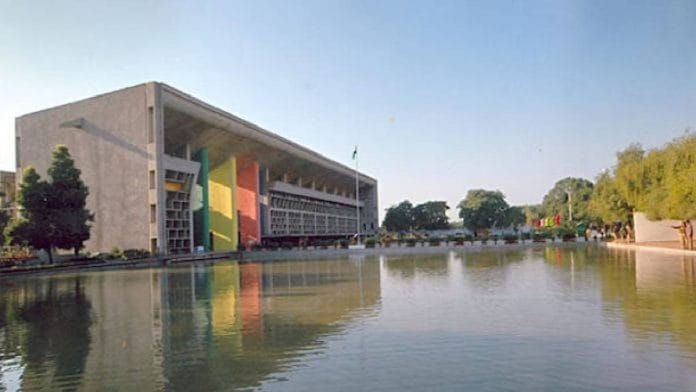Gurugram: The Punjab & Haryana High Court Bar Association (PHHCBA) is at a crucial juncture with its general body set to decide by casting of votes on whether the high court should be relocated from its present location in Chandigarh’s Sector 1 to a new, sprawling complex in Sarangpur village. The high court is currently located in the Chandigarh Capitol Complex, designed by Le Corbusier and declared a UNESCO World Heritage Site in 2016.
The move was triggered by a Public Interest Litigation (PIL) over acute space shortage, with the division bench, headed by Chief Justice Sheel Nagu and Justice Ramesh Kumari, ordering that no relocation can take place unless the general body reaches a consensus.
The vote, the date for which has yet to be announced, will decide the future of judicial infrastructure in the area, weighing the preservation of heritage, logistical practicability, and long-term expandability.
On Monday, PHHCBA president Satraj Narula confirmed to The Print that the voting will be held soon, adding that the date of voting is yet to be notified. He also said that the association has circulated an intimation among its members of its intention in this regard.
The intimation sent Monday by Gagandeep Jammu, honorary secretary of the PHHCBA, said that the association is set to decide whether or not to relocate the high court from its cramped, present premises in Sector 1 of Chandigarh to a new 49-acre location in Sarangpur, as the original holistic plan for extension has been delayed since 2023.
Expansion or relocation?
Jammu, ThePrint has learnt, told members of the bar association that the present UNESCO World Heritage site, “restricted by two entry/exit points and heritage limitations, can’t fit the increasing demands of 15,000 Bar members, expected to be 25,000 over a decade”.
He also made a case against inadequate space for seating and parking in the complex, adding, “The in-situ expansion proposal provides 3 lakh sq ft, comprising 16 courtrooms and space for 600–700 vehicles, but only reserves 60,000 sq ft for Bar members, which is insufficient, and needs UNESCO approval with a 5–7 year time frame through constant construction disruption.”
Jammu, it is learnt, said alternatively, the Sarangpur proposal offers 42 lakh sq ft, improved connectivity through a proposed metro station and broader roads, and adequate space for advocates and staff for 20–25 years. The existing court premises are limited in development by proximity to Sukhna Lake and strict heritage guidelines that restrict vertical or horizontal growth to retain its Outstanding Universal Value.
The PIL, citing increased traffic by judges, advocates, employees, and litigants, led the court to instruct the Chandigarh UT Administration and PHHCBA to discuss solutions.
A joint sitting, chaired by Additional Solicitor General Satya Pal Jain, examined two main options to plug the infrastructure gap.
The first one entails in-situ expansion across from the PHHCBA Bar Room, suggesting three underground parking floors for 600–700 cars, three chambered floors, and 16 other courtrooms, providing around 3 lakh sq ft of space.
Valued at Rs 200 crore, this proposal poses major challenges: a construction period in excess of five years, operational disruptions due to congestion, noise, dust, and curtailed parking, and UNESCO World Heritage Committee approval.
Gagandeep Jammu explained in his intimation to the members that this option provides only 60,000 sq ft for the Bar members, described as “wholly insufficient” to cope with existing and future needs.
The second solution, voted for unanimously by the PHHCBA executive committee on 20 August, is to relocate the high court to Sarangpur village, where 48.865 acres—15 acres already identified—would accommodate 42 lakh sq ft of specially designed judicial facility.
It is a site with better connectivity, with a planned metro station, road widening scheme, flyover connectivity from PGI, and several entry/exit points, resolving present congestion and scaling up for future expansion. The PIL, at the heart of these deliberations, reinforces the imperative to tackle infrastructure limitations in hindering judicial efficiency.
The upcoming vote, critical in determining the court’s final verdict, will determine not just the physical presence of the high court but also its capacity to serve an evolving legal community while being true to Chandigarh’s architectural past.
(Edited by Saksham Thakur)
Also Read: The Rock Garden saga: Why Chandigarh residents are up in arms against demolition of a ‘mere wall’






